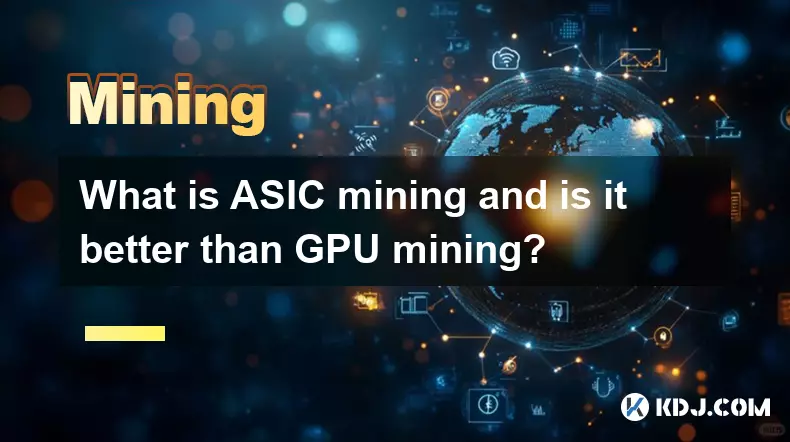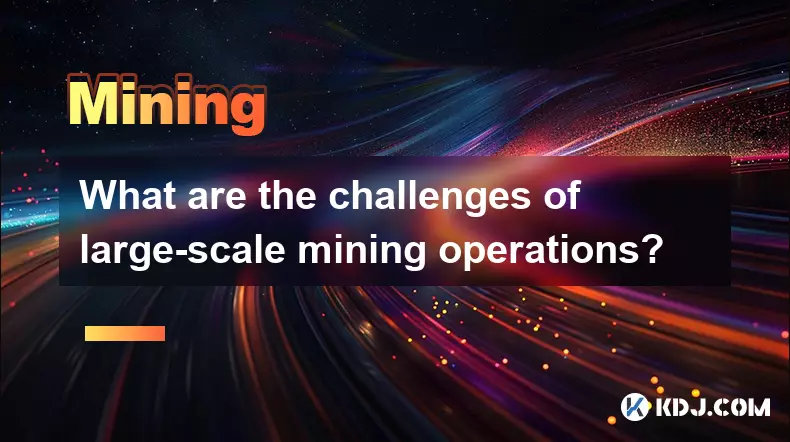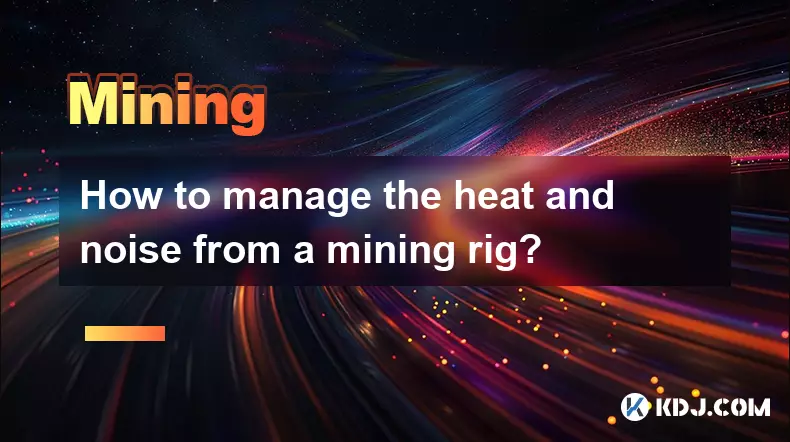-
 bitcoin
bitcoin $111145.080499 USD
0.75% -
 ethereum
ethereum $3928.989005 USD
1.66% -
 tether
tether $1.000226 USD
-0.02% -
 bnb
bnb $1108.209329 USD
-2.26% -
 xrp
xrp $2.545944 USD
6.36% -
 solana
solana $193.960655 USD
0.72% -
 usd-coin
usd-coin $1.000128 USD
0.02% -
 dogecoin
dogecoin $0.199304 USD
2.23% -
 tron
tron $0.297908 USD
-4.88% -
 cardano
cardano $0.656962 USD
2.13% -
 hyperliquid
hyperliquid $39.225782 USD
-1.92% -
 chainlink
chainlink $17.897108 USD
2.99% -
 ethena-usde
ethena-usde $0.999354 USD
-0.02% -
 stellar
stellar $0.321154 USD
3.36% -
 bitcoin-cash
bitcoin-cash $505.299839 USD
5.10%
What is ASIC mining and is it better than GPU mining?
ASIC miners dominate Bitcoin's SHA-256 network with unmatched efficiency, but their high cost and rigidity contrast with GPUs' flexibility and accessibility in altcoin mining.
Oct 23, 2025 at 09:36 am

Understanding ASIC Mining in the Cryptocurrency Ecosystem
1. ASIC stands for Application-Specific Integrated Circuit, a type of hardware engineered exclusively for mining cryptocurrencies. Unlike general-purpose devices, ASICs are built to perform one specific task—mining a particular algorithm—with maximum efficiency. These machines dominate networks like Bitcoin, which rely on the SHA-256 hashing algorithm. Their design allows them to process hashes at speeds unattainable by other consumer-grade hardware.
2. The development of ASIC miners began as a response to the inefficiencies observed in CPU and GPU mining. As blockchain networks grew, so did the computational difficulty of solving cryptographic puzzles. Miners sought faster, more energy-efficient solutions. Companies like Bitmain, MicroBT, and Canaan entered the market, producing increasingly powerful ASIC rigs capable of terahashes per second (TH/s).
3. Energy consumption remains a critical factor when evaluating ASIC performance. While these devices consume substantial power, their hash-per-watt ratio is significantly better than GPUs. A modern ASIC miner can deliver over 100 TH/s while using less than 3,000 watts, making it far more efficient for large-scale operations where electricity costs directly impact profitability.
4. The specialized nature of ASICs limits their versatility. An ASIC built for SHA-256 cannot mine Ethash or Scrypt-based coins. This lack of flexibility means investors must carefully consider long-term viability before purchasing. If a network changes its consensus mechanism or becomes unprofitable, the hardware may become obsolete or require resale in secondary markets.
5. Centralization concerns have emerged due to the high cost and limited availability of ASIC miners. Because only well-funded entities can afford bulk purchases and maintain cooling and power infrastructure, mining power tends to concentrate in certain regions. This contradicts the decentralized ethos promoted by many blockchain projects.
GPU Mining: Flexibility and Accessibility
1. Graphics Processing Units (GPUs) were not originally designed for cryptocurrency mining but gained popularity due to their parallel processing capabilities. Gamers and hobbyists discovered that multi-GPU setups could effectively mine coins like Ethereum prior to its transition to proof-of-stake. GPUs remain relevant for mining altcoins such as Ravencoin, Ergo, and Dogecoin, especially those utilizing memory-hard algorithms.
2. One major advantage of GPU mining lies in adaptability. A single graphics card can switch between different cryptocurrencies depending on profitability and network conditions. This flexibility allows individual miners to respond dynamically to market shifts without investing in new hardware each time.
3. Entry barriers for GPU mining are relatively low compared to ASICs. Enthusiasts can start with a basic rig consisting of consumer-grade components available at retail stores. Used GPUs from gaming communities also provide affordable options, enabling broader participation across diverse geographic and economic backgrounds.
4. Power efficiency varies widely among GPU models. High-end cards like the NVIDIA RTX 3090 offer strong hashrates but come with steep electricity demands. Overclocking and undervolting techniques help optimize performance, though thermal management becomes crucial when running multiple units continuously.
5. The lifespan of a GPU extends beyond mining applications. After retiring from crypto workloads, these components can be repurposed for gaming, video editing, or machine learning tasks. This residual value adds an economic layer often missing with ASICs, which rarely find alternative uses once retired from mining.
Economic and Operational Trade-offs
1. Profitability calculations must account for initial investment, ongoing electricity costs, maintenance, and potential hardware depreciation. ASICs typically achieve breakeven faster in high-difficulty environments due to superior output, but this advantage diminishes if energy prices rise or coin values drop.
2. Maintenance complexity differs significantly. ASICs operate as sealed units with minimal user serviceability. Failures usually require manufacturer repair or replacement. In contrast, GPU rigs allow component-level troubleshooting—defective fans, riser cables, or memory modules can be replaced individually, reducing downtime.
3. Noise levels and physical footprint influence deployment choices. Industrial ASIC farms generate considerable noise and heat, necessitating dedicated facilities with ventilation systems. Home-based miners often prefer GPUs despite lower efficiency because they can be integrated into existing spaces with moderate modifications.
4. Market volatility affects both approaches differently. Sudden drops in cryptocurrency prices can render ASIC operations uneconomical overnight, particularly for older models. GPU miners benefit from easier exit strategies—they can halt operations temporarily or sell equipment for non-mining purposes without total loss of capital.
Frequently Asked Questions
Can I use an ASIC miner to mine Ethereum?No, Ethereum no longer supports proof-of-work mining after transitioning to proof-of-stake in 2022. Even before the upgrade, Ethereum used Ethash, a memory-hard algorithm resistant to ASIC optimization. Specialized ASICs for Ethash exist but are ineffective compared to GPUs due to deliberate design choices in the protocol.
Are ASIC miners worth buying for small-scale operators?For individuals without access to cheap electricity or commercial hosting, ASICs may not be cost-effective. High upfront costs and inflexibility make them risky investments unless deployed at scale. Small miners often achieve better risk-adjusted returns using GPUs or participating in cloud mining pools.
How do firmware updates affect ASIC performance?Manufacturers periodically release firmware to improve stability, efficiency, or compatibility with network changes. Flashing updated firmware can enhance hash rate slightly or reduce power draw, but improper updates risk bricking the device. Always follow vendor guidelines and back up configurations before proceeding.
Is there any way to make GPU mining more efficient?Yes, optimizing BIOS settings, applying custom voltage curves, and using lightweight operating systems like HiveOS can boost efficiency. Ensuring proper airflow, using PCIe risers with stable connections, and selecting algorithms matched to your GPU architecture further increase productivity and longevity.
Disclaimer:info@kdj.com
The information provided is not trading advice. kdj.com does not assume any responsibility for any investments made based on the information provided in this article. Cryptocurrencies are highly volatile and it is highly recommended that you invest with caution after thorough research!
If you believe that the content used on this website infringes your copyright, please contact us immediately (info@kdj.com) and we will delete it promptly.
- Essex Post Office, 5p Coins, and King Charles: A Royal Mint Revelation!
- 2025-10-23 10:30:16
- Waymo's Newark Airport AV Tests: Alphabet's AI Gamble Pays Off?
- 2025-10-23 10:30:16
- King Charles 5p Coins: A Royal Flush in Your Pocket?
- 2025-10-23 10:35:18
- Solana, Crypto Advisory, and Forward Industries: A New York Minute on the Future of Finance
- 2025-10-23 08:51:22
- MAGACOIN: Ethereum Whales Dive into the Hottest Presale of 2025
- 2025-10-23 08:51:22
- Kadena's End of the Road? KDA Token Plummets Amid Project Abandonment
- 2025-10-23 08:55:34
Related knowledge

A simple explanation of the Bitcoin mining process
Oct 21,2025 at 05:54am
What Is Bitcoin Mining?1. Bitcoin mining is the process by which new bitcoins are introduced into circulation and transactions are verified on the blo...

How to get started with Litecoin mining?
Oct 19,2025 at 07:01am
Understanding Litecoin Mining Basics1. Litecoin mining involves verifying transactions on the Litecoin blockchain using computational power. Miners so...

What are the challenges of large-scale mining operations?
Oct 18,2025 at 07:01pm
Energy Consumption and Power Management1. Large-scale mining operations require massive amounts of electricity to power thousands of ASICs or GPUs run...

How to set up NiceHash for easy mining?
Oct 25,2025 at 06:26am
Getting Started with NiceHash1. Visit the official NiceHash website and download the latest version of the NiceHash Miner application compatible with ...

Understanding the centralization of mining pools
Oct 24,2025 at 05:19am
Power Distribution in Cryptocurrency Mining Networks1. The structure of mining pools plays a crucial role in determining how decentralized a blockchai...

How to manage the heat and noise from a mining rig?
Oct 22,2025 at 05:36pm
Optimizing Ventilation for Mining Rigs1. Proper airflow is essential when running a mining rig continuously. Position the rig in a well-ventilated roo...

A simple explanation of the Bitcoin mining process
Oct 21,2025 at 05:54am
What Is Bitcoin Mining?1. Bitcoin mining is the process by which new bitcoins are introduced into circulation and transactions are verified on the blo...

How to get started with Litecoin mining?
Oct 19,2025 at 07:01am
Understanding Litecoin Mining Basics1. Litecoin mining involves verifying transactions on the Litecoin blockchain using computational power. Miners so...

What are the challenges of large-scale mining operations?
Oct 18,2025 at 07:01pm
Energy Consumption and Power Management1. Large-scale mining operations require massive amounts of electricity to power thousands of ASICs or GPUs run...

How to set up NiceHash for easy mining?
Oct 25,2025 at 06:26am
Getting Started with NiceHash1. Visit the official NiceHash website and download the latest version of the NiceHash Miner application compatible with ...

Understanding the centralization of mining pools
Oct 24,2025 at 05:19am
Power Distribution in Cryptocurrency Mining Networks1. The structure of mining pools plays a crucial role in determining how decentralized a blockchai...

How to manage the heat and noise from a mining rig?
Oct 22,2025 at 05:36pm
Optimizing Ventilation for Mining Rigs1. Proper airflow is essential when running a mining rig continuously. Position the rig in a well-ventilated roo...
See all articles










































































